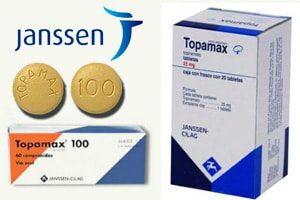
Janssen Pharmaceuticals Inc. must pay more than $10 million to the family of a child who allegedly suffered Topamax (topiramate) birth defects. The Philadelphia state jury just decided that Janssen did not adequately warn physicians about the epilepsy drug’s birth defect side effects, according to Law360. The jury found that Johnson & Johnson—Janssen is a […]
 Janssen Pharmaceuticals Inc. must pay more than $10 million to the family of a child who allegedly suffered Topamax (topiramate) birth defects.
Janssen Pharmaceuticals Inc. must pay more than $10 million to the family of a child who allegedly suffered Topamax (topiramate) birth defects.
The Philadelphia state jury just decided that Janssen did not adequately warn physicians about the epilepsy drug’s birth defect side effects, according to Law360. The jury found that Johnson & Johnson—Janssen is a unit of J&J—was aware of the risks of taking Topamax years before the drug was prescribed to patients.
In this case, the five-year-old child allegedly developed a cleft palate, and other birth defects after being exposed to Topamax in utero, according to Law360. This decision followed another decision just three weeks ago in which another Philadelphia state jury found that Janssen must pay $4 million in a related lawsuit that alleged Topamax caused similar birth defects to another family’s child, according to Law360.
Topamax received U.S. Food and Drug Administration (FDA) approval to prevent migraine headaches and as a treatment for epilepsy. In 2010, Janssen agreed to pay in excess of $81 million to settle a Department of Justice inquiry into off-label Topamax marketing. In 2011, the FDA issued a warning indicating that Topamax increases risks for some congenital defects, specifically oral clefts in babies exposed to Topamax when their mothers were pregnant, according to court filings.
North American Antiepileptic Drug (AED) Pregnancy Registry data suggests babies exposed to Topamax during pregnancy experience a 1.4 percent likelihood of being born with oral clefts. This was in comparison to infants exposed to other anti-epileptic drugs who had a 0.38-0.55 percent prevalence and infants who were not exposed to any anti-epileptic and who had a 0.07 percent prevalence for this birth defect, Lawyers and Settlements previously reported. The findings prompted the FDA to issue the 2011 warning letter. At that time, the FDA pointed out that the risk/benefit profile of Topamax should be carefully weighed, especially when prescribed for non-life-threatening conditions, said Lawyers and Settlements. Also at that time, the agency re-classified topiramate from Pregnancy Category C to Pregnancy Category D, which means evidence of fetal risk based on human data exists.
Law360 explained that cleft lip and palate birth defects occur when parts of the lip or palate do not completely fuse together early in the first pregnancy trimester. The problem ranges from a small lip notch to a groove extending from the roof of the mouth and nose. This can lead to ear infections and problems with eating and talking, according to the FDA.
A recent study suggested that taking Topamax during pregnancy could lead to side effects that include birth defects. The study, conducted by researchers at the Royal Melbourne Hospital and University of Melbourne, Australia, looked at Topamax, Depakote (valproate), and Tegretol (carbamazepine) to understand the link between the use of these anti-epileptic medications during pregnancy and increased risks for birth defects, said Lawyers and Settlements. The study appeared in the March 6, 2013 issue of the journal Acta Neurologica Scandinavica. Prior studies also linked Topamax and other anti-seizure drugs to birth defects in babies exposed to the medications in utero; however, not all anti-seizure drugs have been linked to the same birth defects, Lawyers and Settlements pointed out.
The FDA’s Adverse Event Report database has received scores of reports of injuries to children believed to be associated with the use of Topamax. Many involve possible Topamax birth defects, including oral clefts, limb malformations, heart defects, cranio-facial defects, spina bifida/spinal malformations, and persistent pulmonary hypertension of the newborn (PPHN).
The FDA estimates that approximately 32.3 million prescriptions for Topamax, or a generic equivalent, were issued from January 2007 through December 2010.


